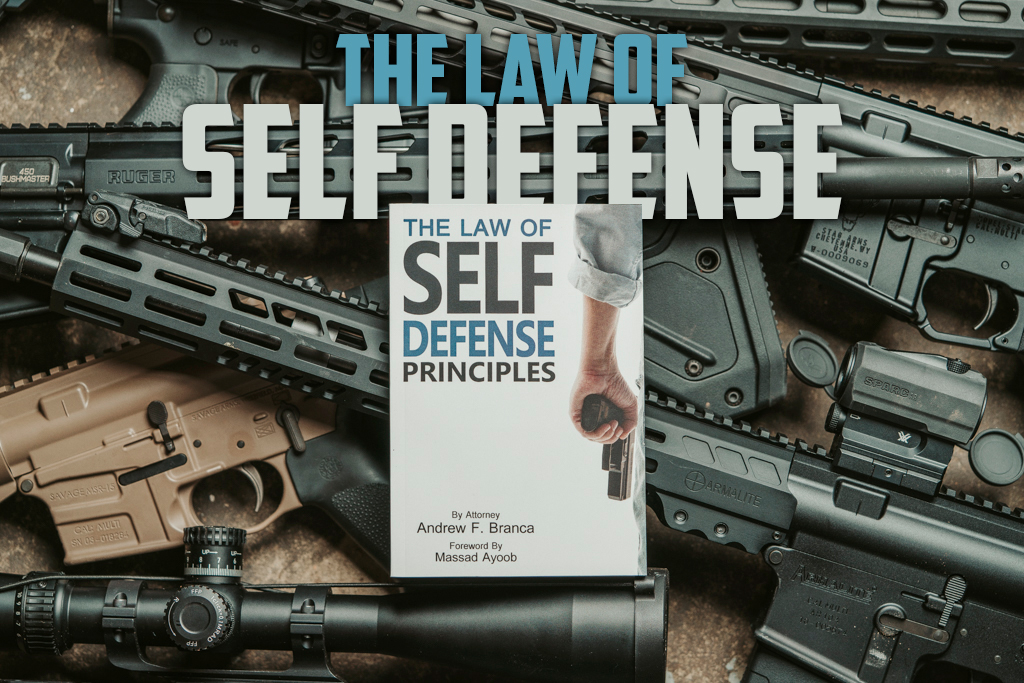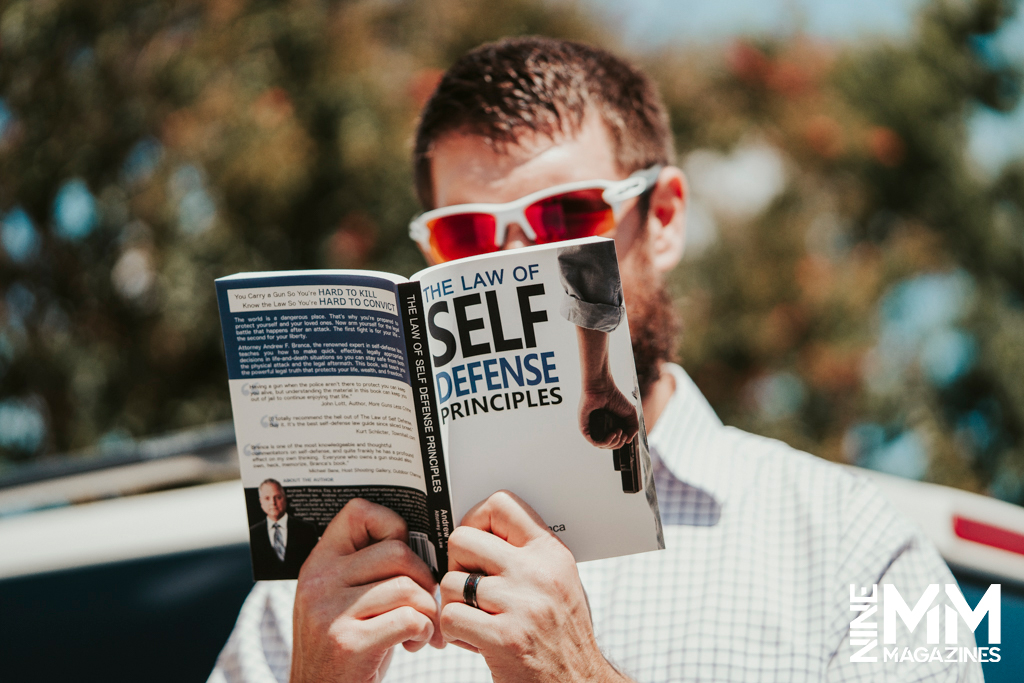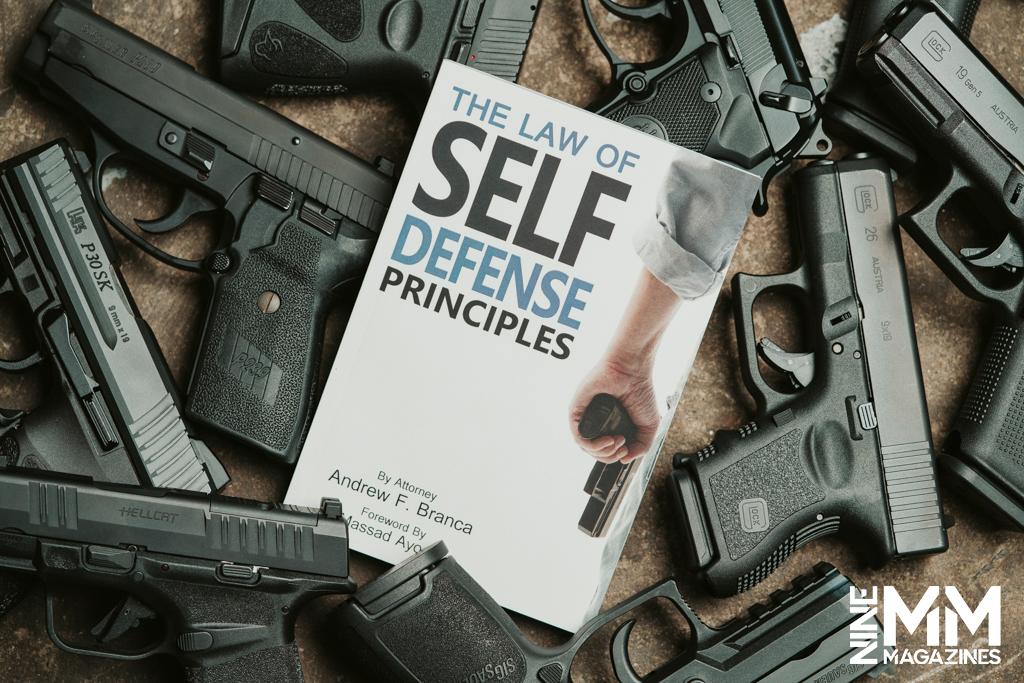
The Law of Self-Defense: The Indispensable Guide for the Armed Citizen
Disclaimer: This page contains affiliate links, meaning we receive commissions for any purchases made through the links on this page.
For those prioritizing safety and protection, The Law of Self-Defense is an invaluable resource for themselves and their families. It guides readers through the web of legal, ethical, and practical considerations encompassing the right to self-defense. This comprehensive guide delves into self-defense law’s historical and contemporary aspects. It equips readers with practical strategies to navigate potential confrontations.
It’s a book for anyone who wants to understand the responsibility and boundaries of self-defense in a world where such situations are all too common.
What Is The Law of Self-Defense?

According to Branca, five elements are considered foundational to establishing a valid self-defense argument. He devotes a chapter to each component and carefully explains how they help determine whether an individual’s use of force was legally justified in a specific situation.
Five elements that define all self-defense claims:
- Innocence involves establishing that the person claiming self-defense was not the aggressor or instigator of the confrontation. They must show that they did not provoke the altercation or initiate the use of force.
- Imminence requires demonstrating an immediate threat of harm or danger that compelled using force in self-defense. The threat must have been imminent or about to occur, leaving no reasonable opportunity to escape or avoid the situation.
- Proportionality means a self-defense action must be proportional to the threat — that the force used in response to the danger matches the amount of force posed by the aggressor. Using excessive or disproportionate force can undermine a self-defense claim.
- Reasonableness concerns the idea that using force in self-defense must be objectively reasonable. The assessment considers factors such as the type of threat, the defender’s perception of the danger, any available alternatives to using force, and whether a reasonable person in the same situation would have acted similarly.
- Avoidance is a requirement in some jurisdictions. It is a duty to retreat, if safe options are available, before using force. It requires demonstrating that the defender attempted to avoid the confrontation or use of force by retreating or seeking alternatives, unless doing so would place them or others in imminent danger.
Why These Elements Matter
Collectively, these five elements help determine whether a person acted lawfully in self-defense. It encompasses the circumstances leading up to the incident, the immediacy of the threat, the level of force, and whether the defender made reasonable efforts to avoid or de-escalate the situation.
As the book progresses, Branca delves deeper into specific legal topics. These include the defense of others (the risks of someone else’s fight), the defense of property (don’t do it), and interacting with the police in the aftermath of a self-defense incident (say little). He provides examples and case studies to illustrate key points, helping readers grasp the nuances of self-defense law in different situations.
Do you Have A Legal Plan For Self-Defense?

Branca points out that any defense strategy that increases one’s chances of landing behind bars and doesn’t help survival is a “bad idea.”
Instead, he recommends avoidance as a starting point for a sound self-defense strategy:
- Don’t do stupid things.
- Don’t go to stupid places.
- Don’t hang out with stupid people.
Avoidance keeps the physical and legal risks to zero, while every other option carries the risk of death, prison, and financial ruin.
Escape or retreat is the next best option for minimizing physical and legal liability. The author emphasizes the danger of believing that being armed provides a sense of security. In fact, those who carry a gun must be willing to take “guff” from everyone but the guy trying to kill them.
If escape is impossible and all else fails, de-escalation techniques feature a loud, confident “command voice” while displaying the weapon to de-escalate the situation.
This is the legal plan for self-defense the author hopes most people will adopt. It can become a framework for achieving the optimal solution in threatening situations that require action.
About The Author
Andrew F. Branca is a highly regarded expert in self-defense law. He is known for his legal analysis and commentary on high-profile self-defense cases. He earned his law degree from the University of Virginia School of Law and has since focused his legal career on the intersection of law and self-defense.
Branca’s expertise extends beyond the written word. As a sought-after speaker and educator, he conducts seminars and workshops on self-defense law, where he excels at simplifying complex legal concepts. This skill has made him a trusted authority in legal circles and the broader community interested in self-defense.
Through his analysis of high-profile cases and contributions to legal education, Andrew F. Branca has established himself as a leading authority in self-defense law. He helps individuals navigate the legal system’s complexities with knowledge and confidence.
The Law of Self-Defense: Is It Worth Reading?

Absolutely! This book is a comprehensive and authoritative guide to understanding the legal principles surrounding self-defense in the United States. Branca provides readers with valuable insights and practical advice on navigating the complex legal landscape related to self-defense incidents.
This book’s standout feature is its accessibility to readers of all backgrounds. Branca breaks legal concepts into understandable terms, making the book suitable for professionals and laypersons interested in self-defense laws. The book begins by establishing foundational principles. These include the importance of understanding self-defense laws, the duty to retreat in various jurisdictions, and the concept of “reasonable force.”
A Practical Legal Guide
The book focuses on practical strategies for avoiding legal trouble before, during, and after a self-defense encounter. Branca emphasizes the importance of preparedness, awareness, and understanding the legal framework in one’s state or jurisdiction. With his guidance, readers can make informed decisions and take appropriate actions to protect themselves and their loved ones within the boundaries of the law.
The Law of Self-Defense is an invaluable resource for those seeking a thorough understanding of self-defense laws in the United States. Branca’s expertise, clear writing style, and practical insights make this book both entertaining and informative. It’s for self-defense and firearms enthusiasts, legal professionals, and anyone concerned about safeguarding their rights in threatening situations. Whether you’re a beginner or an experienced practitioner, this book provides the knowledge and tools to confidently navigate legal challenges.
My overall rating of The Law of Self-Defense: 5/5 
Need another great book to read? Check out our review of Greg Ellifritz’s Book, Choose Adventure.

